Ingredients
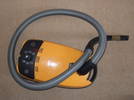 | A Vacuum Cleaner | 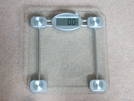 | Bathroom scales |
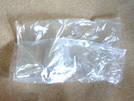 | Large, strong, clear plastic bag |  | A board about the size of your scales, the right sized chopping board would be ideal |
Instructions
Get your bathroom scales and place the board behind them - this should have the corners rounded off.
Put the whole lot inside your plastic bag. Wrap any excess bag around the scales and secure them with some sticky tape.
Put the pipe from the vacuum cleaner into the mouth of the bag and use your hands to wrap all the excess plastic around the tube.
Turn on the vacuum cleaner and see what value the scales read.+ Some types of electronic bathroom scales are slightly too clever for these purposes. They will only actually give a reading once the force on them has stabilised. However many of these scales have a mode for calibration in the factory. Inside the box which holds the display there is often a black connector with two pins sticking out of it. This is sometimes behind a hole in the casing so you don't even have to remove any screws. If you connect the two pins together and release them, the scales change mode, and normally the first mode you come to is more conventional calibration mode - beware this often disables the auto power off feature. To get the scales back to normal, just pull the batteries out and reinsert them.
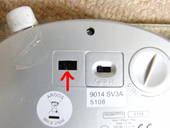 |  |
| The connector is sometimes in a hole at the back | It consists of two prongs sticking out of a black block |
Result
Depending on the power of your vacuum cleaner and the surface area of your scales you will find that the scales will read up to and in fact significantly over 150kg.
Explanation
Although air seems weightless it is actually reasonably heavy - every cubic metre at sea level has a mass of about 1kg. The atmosphere goes up many kilometres which adds up to a really significant weight which must be supported by the air closest to the ground. As air is very compressible this means that all the air around you is compressed by the air above it.
If you compress a spring it pushes back, and if you compress a fluid (something which flows like a gas or liquid), it will push back in all directions - it exerts a pressure. (This is why if you try and squash water between your hands it squirts out at the sides.)
This air pressure pushes on everything in all directions. However the scales can't normally measure this because there is the same pressure and therefore force pushing upwards from underneath the scales as there is pushing downwards, they exactly cancel out, so the scales read zero.
The vacuum cleaner pumps air out of the bag, this lets the air that is left expand, so like a spring it pushes outwards less hard.
Now there is less force pushing outwards than inwards and the scales measure this force.
| <img data-cke-saved-src="/sites/default/files/media/AirPressure-no-bag.png" src="/sites/default/files/media/AirPressure-no-bag.png" style="width: 300px; height: 104px;" title="The air pressure on the top and bottom of the scales is the same so they don" t="" read="" anything="" (c)="" dave="" ansell'="" alt="Air pressure on a scales"> | 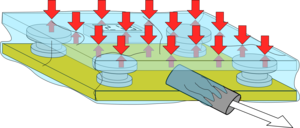 |
| Normally there is the same air pressure pushing up as down on the scales so it reads no force. | But if you pump air out from the bag there is more force pushing down than up so the scales take a reading. |
A reading of 150kg seems like a very large force on a set of bathroom scales, but a vacuum cleaner only pumps out a fifth to a quarter of the air in the bag. Air pressure is actually 100,000N/m2 or the equivalent of 10 tonnes per square metre. So if you used a better vacuum pump and pumped out all of the air the force on your bathroom scales (which have an area of about 0.1m2) would be equivalent to nearly a tonne!
What has this got to do with sucking?
Because a gas can keep on expanding forever, it is impossible to pull on it. When we suck on a straw to drink some refreshing lemonade, what actually happens is that we reduce the pressure inside our mouths. This means that the air in our mouths pushes less hard down on the lemonade compared to how hard the air outside is pushing, so the air outside pushes it up the straw.









Comments
Add a comment